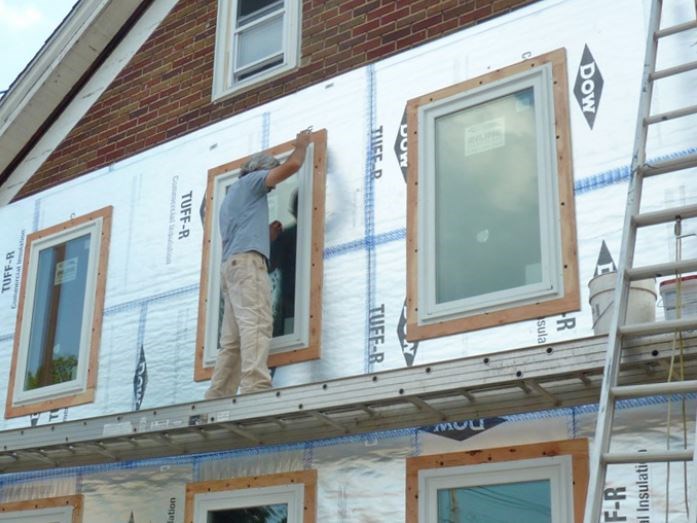THUNDER BAY – Thunder Bay’s municipal government is contemplating moving forward with plans for an ambitious home retrofit financing program, something staff say will be essential in order to meet the city’s net zero climate goals.
The city’s sustainability coordinator, Summer Stevenson, will on Monday present to city council the results of a feasibility study carried out last year to determine if Thunder Bay could support such a program.
If council approves a recommendation from administration Monday, the city will proceed to the next stage, a further study to design the program, including financing details, eligibility, and funding.
Household energy use accounts for about 19 per cent of the city’s total greenhouse gas emissions, Stevenson said, making action to help homeowners reduce energy usage crucial to reach net zero emissions by 2050, as the city has pledged to do.
“The thing about emissions reductions is it all comes down to math, and the math doesn’t really care about funding and the like,” she said. “Without home retrofits, it would be nearly impossible to achieve net zero.”
About 93 per cent of local homes are heated using natural gas, the biggest driver of household emissions.
The city’s feasibility study found significant potential to reduce energy use and emissions in Thunder Bay through a home retrofit program.
The study broke local homes into 11 “housing archetypes” categories, to determine where to focus financing support to make the biggest impact.
“Based on this, we identified a number of different categories of homes in Thunder Bay that could see significant reduction in their energy consumption – so that would translate into energy savings as well, and reduced bills – for not too high of a cost,” said Stevenson.
Homeowners in four of those categories would realize savings from energy retrofits under every scenario considered in the study.
She pointed to one housing archetype, bungalow-style homes built around 1960 with a basement and no central air conditioning, as an example.
“We have a lot of those in Thunder Bay. If we were to do electrification packages on these homes, we model around 84 per cent greenhouse gas emissions reductions.”
The potential benefits are clear, Stevenson said, but due to the high upfront cost of deep energy retrofits, the city believes significant incentives are required for homeowners to undertake the work.
Stevenson’s report to council recommends applying to the Federation of Canadian Municipalities’ Green Municipal Fund, which would cover up to 80 per cent of the cost of the program design study, estimated at around $175,000.
That would leave the city to pay around $35,000.
The city considered several potential financing models, including a local improvement charge, which has been implemented by cities including Toronto, Ottawa, and Kingston to support retrofit programs, and an on-bill utility charge.
Instead, staff recommend pursuing a third-party lending model in partnership with regional credit unions, an approach recently taken in Durham.
The arrangement would see credit unions provide the capital for long-term, low-interest loans, easing financial demands on the city.
“Homeowners would be signing an agreement with the credit union, and the funds would come from the credit union,” Stevenson said. “Our role would be facilitating that relationship, thinking about the delivery partners, where do homeowners apply for this program.”
That program could be launched in collaboration with other regional municipalities, the city said, potentially making it more attractive to funders including the Federation of Canadian Municipalities.
Retrofits to maximize energy efficiency can be an expensive proposition, with city staff pointing to estimates of $30,000 to $80,000 to realize energy savings of 64 to 67 per cent in a recent Toronto-based study.
For many, but not all, types of homes, owners would eventually recoup those costs through energy savings.
While the city designs the program, Stevenson pointed out homeowners have access to recently introduced federal incentives through the Greener Homes Program, including $5,000 grants and loans of up to $40,000 to improve energy efficiency.
Public engagement carried out during the feasibility study garnered 150 responses to an online survey, with 74 per cent respondents either supportive of or interested in learning more about a city-sponsored borrowing program.
Residents who wish to learn more can contact EcoSuperior, Stevenson suggested.
Lower income households may also qualify for EcoFit, a subsidized winterization program run by Enbridge that provides access to free energy audits and potential upgrades.
Residents can learn more about the home energy retrofit project and other local environmental issues at a booth that will be set up by EarthCare, the city’s sustainability committee, at Live on the Waterfront events at Marina Park on July 20 and 27, and Aug. 3
